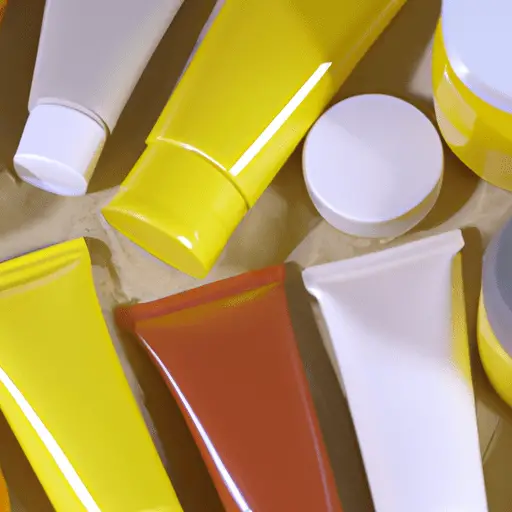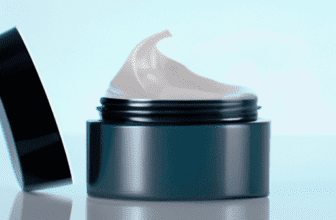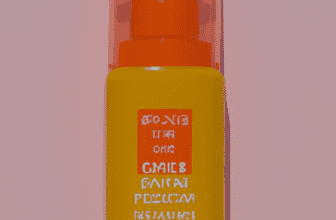Different types of sunscreens and their SPF levels
-
Table of Contents
- Understanding Sunscreens: Different Types and Their SPF Levels
- Key Takeaways
- Introduction: The Sun, Your Skin, and Sunscreens
- The Importance of Sun Protection
- Types of Sunscreens
- Understanding SPF Levels
- Choosing the Right Sunscreen
- FAQ Section
- 1. What does broad-spectrum mean?
- 2. Can I use a sunscreen with a lower SPF if I have dark skin?
- 3. Is sunscreen necessary when it’s cloudy?
- 4. Are spray sunscreens as effective as lotions?
- 5. Can I use sunscreen on my baby?
- Conclusion: Protecting Your Skin with the Right Sunscreen
- Key Takeaways
Understanding Sunscreens: Different Types and Their SPF Levels

[youtubomatic_search]
Key Takeaways
- Understanding the importance of sun protection and the role of sunscreens.
- Exploring the different types of sunscreens available in the market.
- Deciphering the meaning and significance of SPF levels in sunscreens.
- How to choose the right sunscreen based on your skin type and lifestyle.
- Addressing common questions about sunscreens and SPF levels.
Introduction: The Sun, Your Skin, and Sunscreens
Exposure to the sun’s ultraviolet (UV) rays can cause skin damage, premature aging, and increase the risk of skin cancer. Sunscreens play a crucial role in protecting our skin from these harmful effects. This article delves into the different types of sunscreens available and the significance of their Sun Protection Factor (SPF) levels.
The Importance of Sun Protection
According to the Skin Cancer Foundation, one in five Americans will develop skin cancer by the age of 70. Overexposure to the sun’s UV rays is the most preventable risk factor for skin cancer. Sunscreens, along with protective clothing and shade, are vital tools in our sun protection arsenal.
Types of Sunscreens
There are two main types of sunscreens: chemical and physical. Chemical sunscreens absorb UV rays and convert them into heat, which is then released from the skin. They typically contain ingredients like oxybenzone, avobenzone, octisalate, octocrylene, homosalate, and octinoxate.
Physical sunscreens, also known as mineral sunscreens, reflect the sun’s rays away from the skin. They contain active mineral ingredients, such as titanium dioxide or zinc oxide. Physical sunscreens are often recommended for people with sensitive skin.
Understanding SPF Levels
SPF stands for Sun Protection Factor. It measures the amount of UVB radiation protection provided by the sunscreen. According to the American Academy of Dermatology, an SPF 30 sunscreen blocks 97% of the sun’s UVB rays, while an SPF 50 sunscreen blocks 98%.
It’s important to note that no sunscreen can block 100% of the sun’s UVB rays, and high-SPF sunscreens do not protect significantly more than medium-SPF ones. The key is to apply enough sunscreen (about a shot glass full for the entire body) and reapply every two hours or immediately after swimming or sweating.
Choosing the Right Sunscreen
When choosing a sunscreen, consider your skin type, lifestyle, and the amount of sun exposure you expect to have. For everyday use, a broad-spectrum sunscreen with an SPF of at least 30 is recommended. For extended outdoor activities, opt for a water-resistant, broad-spectrum sunscreen with an SPF of 50 or higher.
FAQ Section
1. What does broad-spectrum mean?
Broad-spectrum sunscreens protect against both UVA and UVB rays. UVA rays can prematurely age your skin, causing wrinkles and age spots, while UVB rays can burn your skin. Both types can cause skin cancer.
2. Can I use a sunscreen with a lower SPF if I have dark skin?
While darker skin has more melanin, which provides some protection against UV rays, it’s not enough to prevent skin damage or skin cancer. People of all skin colors should use a broad-spectrum sunscreen with an SPF of at least 30.
3. Is sunscreen necessary when it’s cloudy?
Yes, up to 80% of the sun’s UV rays can penetrate clouds, according to the American Academy of Dermatology. Therefore, it’s important to wear sunscreen every day, regardless of the weather.
4. Are spray sunscreens as effective as lotions?
Spray sunscreens can be as effective as lotions if applied correctly. However, they need to be rubbed into the skin after spraying and may need more frequent reapplication.
5. Can I use sunscreen on my baby?
The American Academy of Pediatrics recommends using sunscreen on babies older than six months. For babies younger than six months, it’s best to keep them out of the sun or dress them in protective clothing.
Conclusion: Protecting Your Skin with the Right Sunscreen
Sunscreens are a vital tool in protecting our skin from the harmful effects of the sun’s UV rays. Understanding the different types of sunscreens and their SPF levels can help you choose the right product for your skin type and lifestyle. Remember, the best sunscreen is the one you’ll use consistently!
Key Takeaways
- Sun protection is crucial to prevent skin damage and skin cancer.
- There are two main types of sunscreens: chemical and physical.
- SPF levels indicate the amount of UVB radiation protection provided by the sunscreen.
- Choosing the right sunscreen depends on your skin type, lifestyle, and the amount of sun exposure you expect to have.
- Regardless of the weather or your skin color, wearing a broad-spectrum sunscreen with an SPF of at least 30 is recommended.
[youtubomatic_search]
Tags: Loading...





